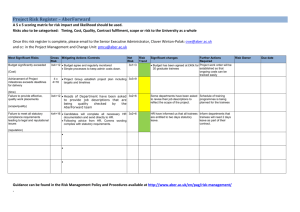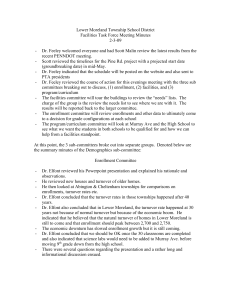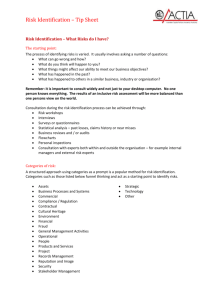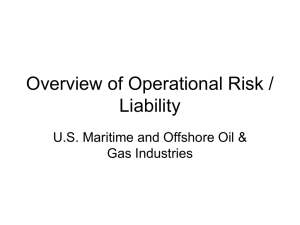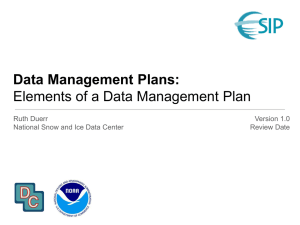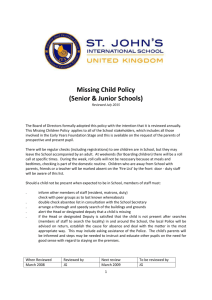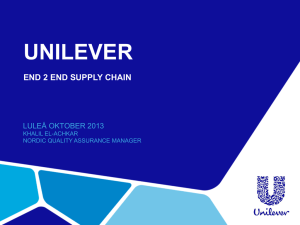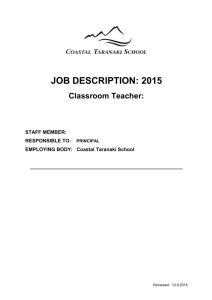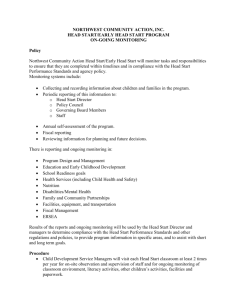Total risk score guide
advertisement
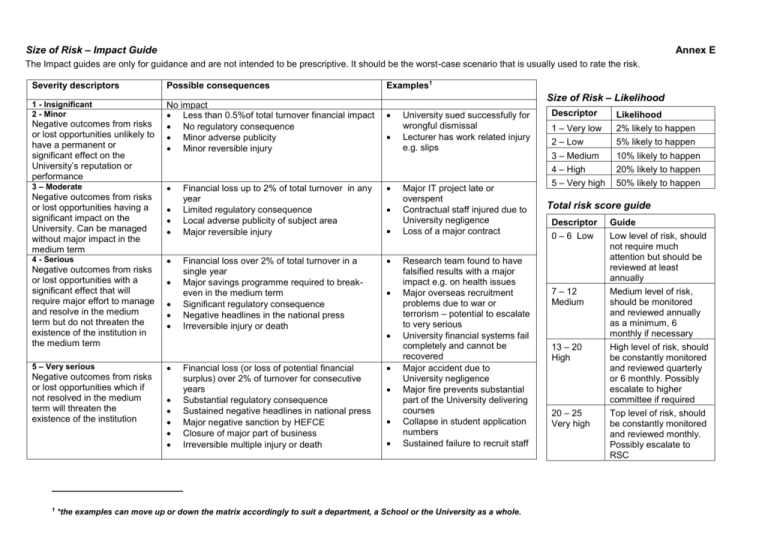
Size of Risk – Impact Guide Annex E The Impact guides are only for guidance and are not intended to be prescriptive. It should be the worst-case scenario that is usually used to rate the risk. Severity descriptors Possible consequences 1 - Insignificant 2 - Minor No impact Less than 0.5%of total turnover financial impact No regulatory consequence Minor adverse publicity Minor reversible injury Negative outcomes from risks or lost opportunities unlikely to have a permanent or significant effect on the University’s reputation or performance 3 – Moderate Negative outcomes from risks or lost opportunities having a significant impact on the University. Can be managed without major impact in the medium term 4 - Serious Negative outcomes from risks or lost opportunities with a significant effect that will require major effort to manage and resolve in the medium term but do not threaten the existence of the institution in the medium term 5 – Very serious Negative outcomes from risks or lost opportunities which if not resolved in the medium term will threaten the existence of the institution 1 Examples1 Size of Risk – Likelihood Financial loss up to 2% of total turnover in any year Limited regulatory consequence Local adverse publicity of subject area Major reversible injury Financial loss over 2% of total turnover in a single year Major savings programme required to breakeven in the medium term Significant regulatory consequence Negative headlines in the national press Irreversible injury or death Financial loss (or loss of potential financial surplus) over 2% of turnover for consecutive years Substantial regulatory consequence Sustained negative headlines in national press Major negative sanction by HEFCE Closure of major part of business Irreversible multiple injury or death University sued successfully for wrongful dismissal Lecturer has work related injury e.g. slips Major IT project late or overspent Contractual staff injured due to University negligence Loss of a major contract Research team found to have falsified results with a major impact e.g. on health issues Major overseas recruitment problems due to war or terrorism – potential to escalate to very serious University financial systems fail completely and cannot be recovered Major accident due to University negligence Major fire prevents substantial part of the University delivering courses Collapse in student application numbers Sustained failure to recruit staff *the examples can move up or down the matrix accordingly to suit a department, a School or the University as a whole. Descriptor Likelihood 1 – Very low 2% likely to happen 2 – Low 5% likely to happen 3 – Medium 10% likely to happen 4 – High 20% likely to happen 5 – Very high 50% likely to happen Total risk score guide Descriptor Guide 0 – 6 Low Low level of risk, should not require much attention but should be reviewed at least annually 7 – 12 Medium Medium level of risk, should be monitored and reviewed annually as a minimum, 6 monthly if necessary 13 – 20 High High level of risk, should be constantly monitored and reviewed quarterly or 6 monthly. Possibly escalate to higher committee if required 20 – 25 Very high Top level of risk, should be constantly monitored and reviewed monthly. Possibly escalate to RSC
